Features
Avocados and Testicles

by Michael Patrick O’Leary
I had one of those silly arguments on Facebook which arise from my contrarian nature forcing me to try to squash a stranger coming forward with some received wisdom with no foundation. This fellow confidently stated that ‘avocado’ was Aztec for testicle.
To be picky, Aztec was not a language. The Aztecs were a people who actually called themselves the Mexica (Me-SHEE-ka), and they came from what is today the American Southwest. Nahuatl was the lingua franca of the Aztecs, who ruled Mexico between the 14th and 16th centuries before they were conquered by the Spanish. Nahuatl has been spoken in central Mexico since the seventh century and is still spoken by nearly 1.5 million Mexicans. ‘Avocado’ comes from the Nahuatl word ahuakatl; ‘chocolate’ from xocolatl; ‘tomato’ from tomatl; and ‘chili’ from cilli.
The English word “avocado” comes from the Spanish word aguacate. The earliest known written use of the word in English was in 1697, as “avogato pear”. The Spanish word aguacate comes from the Nahuatl word âhuakatl. The Nahuatl word âhuakatl was sometimes used as slang for testicles because of the shape of the fruit and its alleged aphrodisiac properties. When I was in Peru, I noticed that lawyers were called “avocados” and wondered if this meant lawyers were regarded as bollocks. In Peru, the fruit itself was called by the Quechua-derived word palta. Peru is now the largest supplier of avocados imported to the European Union and the second largest supplier to Asia and the United States.
Vocabulario en lengua castellana y mexicana
is a bilingual dictionary of Spanish and Nahuatl by Alonso de Molina, first published in 1555. In Molina’s Nahuatl dictionary auacatl is given also as the translation for compañón “testicle”, and this has been taken up in popular culture as a fact that testicle was the word’s original meaning. This is not the case, as the original meaning can be reconstructed as “avocado” – rather the word seems to have been used in Nahuatl as a euphemism for “testicle”.
Until the early 1900s, the ahuakatl had never been grown commercially in the United States. By 1914, however, hotels in Los Angeles and San Francisco were ordering as many of the fruits as they could and paying as much as $12 for a dozen.
The first time I heard of avocados, they were called avocado pears. This was a bit confusing because in my English childhood, pears were things you had out of tins at Sunday tea time and they came in a sickly, sugary syrup. In later life, I enjoyed eating avocados as a savoury snack swimming in garlicky oil and vinegar. Walnut oil and balsamic vinegar for preference.
In those drear, dead days when I had to work for a living, the office crowd in London used to lunch on sandwiches or baguettes filled with pureed avocado and crispy bacon. Here in Sri Lanka, we can substitute dried sprats for crispy bacon.
Sri Lankans do sometimes eat avocados as a pudding with sugar and cream, or pureed with milk and kitthul treacle. They are sometimes called butter fruit. Diabetes has long been a scourge in this country. When I was in Goa, I developed a craving for cold fruit lassis that I bought on the beach. Avocado lassi was one of them. Lassi, a yogurt-based drink, itself has many health benefits, including improved digestion, bone health, and immunity beneficial bacteria that help with digestion and prevent bloating, constipation, and indigestion.
Botanically, this fruit is a berry not a pear and the tree is a member of the laurel family. It is native to the Americas and was first domesticated in Mesoamerica more than 5,000 years ago.
Cholesterol
I first heard of cholesterol in the early 80s although it had been discussed long before that. In 1769,François Poulletier de la Salle identified solid cholesterol in gallstones. The story of lipids includes at least 11 Nobel prizes, but that is another story. I was once a small cog in the Study of Health and Stress carried out by Professor Sir Michael Marmot at London University. This was when I found out that cholesterol was a thing. My cholesterol levels were “at the high end of the normal range”. Medication was not suggested. In London I was advised to avoid cashew nuts, coconut oil, avocados and prawns. In Sri Lanka I was told to eat as much of them as I could. I am more than happy to help the Sri Lankan economy by gorging on these delicious and healthy comestibles.
Gut Feeling
Avocados positively impact the gut microbiome inside the digestive tract. Avocado is rich in a phytochemical called lutein—a pigment related to beta carotene and vitamin A. Lutein is one of the two major carotenoids found in the eye. The other place lutein is found is the brain. Eating avocados improved performance on memory tests but taking a lutein supplement did not give the same results, so something in the fruit itself, possibly healthy fats, improved brain function. Eating avocados increases the amount of macular pigment that results from an increase in zeaxanthin. Extracts of avocado pulp or the fruit have been found to have cancer fighting properties. An extract containing several antioxidants, including lutein, zeaxanthin, beta carotene, and vitamin E, stopped the growth of prostate cancer cells. Another extract killed oral cancer cells.
The amount of folate, one of the many B vitamins responsible for energy metabolism and new cell production, is 40% of the daily value. Avocado has over 30% of the daily value for vitamin K, necessary for blood clotting and bone health. The amount of vitamin C is over 20% of the daily value of the water-soluble antioxidant that supports immune health and aids collagen synthesis to promote wound healing. The four milligrams of vitamin E, a fat-soluble antioxidant that supports cell structure, is 26% of the daily value for vitamin E. Nearly 30% of the daily value of potassium and almost 20% of the daily value of magnesium, a mineral essential for structural and chemical reactions in the human body, is in this fruit.
Food Fads, Good and Bad
Foody fads come and go. Currently, the consensus is that avocados are good for you. People who regularly eat avocados have higher intakes of fiber, vitamins E and K, magnesium, and potassium than people who don’t eat them.
There has to be a drawback, though. It seems that the cultivation of avocados is bad for the planet. The water demands of avocado farms places a strain on local resources. The trend of increasing avocado consumption (estimates indicate that globally around five million tonnes are consumed each year) during recent decades is allegedly causing negative environmental and socio-economic impacts in many countries.
Monkey Minds
The avocado is a climacteric fruit, which matures on the tree, but ripens off the tree. It is difficult to make monkeys understand this. The hooligans pick the fruit, discover they are too hard and throw them away. Avocados used in commerce are picked hard and green and kept in coolers at 3.3 to 5.6 °C (37.9 to 42.1 °F) until they reach their final destination. Their final destination may be thousands of miles away and require a lot of jet fuel to get there. Some supermarkets sell ripened avocados which have been treated with synthetic ethylene to hasten ripening.
At our mountain retreat in Sri Lanka, we had ten avocado trees which gave us thousands of fruit. We did not waste water on them because there was a lot of rain . A friend in the UK asked me if I missed the Cork rain. I said I missed its moderation. We did not harm the local community because we gave away the fruit we could not eat ourselves.
Michael Patrick O’Leary is an Irish citizen who has lived in Sri Lanka with his Sri Lankan wife since 2002.
More of his writing can be found on Substack. Please subscribe . It’s free!
Features
Trump’s Second Coming and the Tech-Industry Complex

by Rajan Philips
Turning and turning in the widening gyre
The falcon cannot hear the falconer;
Things fall apart; the centre cannot hold;
Mere anarchy is loosed upon the world,
The blood-dimmed tide is loosed, and everywhere
The ceremony of innocence is drowned;
The best lack all conviction, while the worst
Are full of passionate intensity.· W.B. Yeats, The Second Coming
It is pathos time in American politics. In his second inaugural address on Monday, January 20, Donald Trump proclaimed divine causality for his second coming. “My life was saved for a reason. I was saved by God to make America great again,” declared Trump. He was referring to the failed attempts on his life during the election campaign.
But there was no hint of humility or any offering of thanks for God’s mercy. Neither attribute is a part of his constitution, and Trump owes nothing to the god he has created for himself to be used as a marketing embellishment. While there is nothing eschatological about Trump’s second coming, what rings familiar is Yeats’s second coming foreboding from a different era a hundred years ago. The Irish poet’s insight forcefully captures Trump’s America – where the best lack conviction and the worst have all the intensity.
An even more powerful insight as well as foresight of what is now unfolding in America can be found in the writings of the progressive American philosopher Richard Rorty (1931-2007) from the late 1990s. Rorty’s 1998 book, Achieving Our Country: Leftist Thought in Twentieth-Century America, has been noted for its prophetic prediction of “an authoritarian strongman” rising to power taking advantage of the economical struggles of the working classes and their disaffection with over-righteous left-liberals preaching social rights over economic necessities. Trump’s election in 2016 fulfilled Rorty’s 1998 prophesy.
The Dark Years and Beyond
Two years earlier in 1996, Rorty presaged Trump’s second coming in a retro-futuristic essay entitled, “Looking Backwards from the Year 2096.” The essay is presented as an excerpt from a speculative article on ‘Fraternity’ published in a 2095 symposium edited by symbolically fictional Cynthia Rodriguez, SJ and Youzheng (not Kash) Patel, and offers these glimpses of light at the end of a long Trumpian tunnel:
“Our long, hesitant, painful recovery, over the last five decades, from the breakdown of democratic institutions during the Dark Years (2014-2044) has changed our political vocabulary, as well as our sense of the relation between the moral order and the economic order. Just as twentieth-century Americans had trouble imagining how their pre-Civil War ancestors could have stomached slavery, so we at the end of the twenty-first century have trouble imagining how our great-grandparents could have legally permitted a CEO to get 20 times more than her lowest paid employees. We cannot understand how Americans a hundred years ago could have tolerated the horrific contrast between a childhood spent in the suburbs and one spent in the ghettos. Such inequalities seem to us evident moral abominations, but the vast majority of our ancestors took them to be regrettable necessities.”
Rorty died one year before Obama was elected, but he was spot on in setting the start of the Dark Years that began with Trump’s foray into politics to negate the promises of Obama’s presidency. But Trump was not a one-term aberration as many thought he would be, and Biden’s presidency did not turn out to be a permanent restoration after Trump. Indeed, another American prognosticator, Harvard University’s Michael Sandel, has called the Biden presidency an interregnum between Trump’s two terms. Trump is now musing about a third term and there is no limit to what he thinks he can do. He might even fancy that he is physically immortal. But there are limits to what he can actually do and even to the lasting effects of all his executive orders and odours that he has been issuing in the first two weeks of his second term.
In Rorty’s sweep of American history, Americans overcame the scourge of slavery in their first hundred years, and they opened the age of human rights and social rights for all peoples in the next hundred years. The Dark Years under Trump are the culmination of the tussles between the promises of the welfare state and supremacy of the market; the frustrations of socialist endeavours followed by the fanaticism of globalization; the fragmentation of societies and lopsided wealth distribution between the overclass of the super-rich and the professional and cultural elites, on the one hand, and the mass of underclasses, on the other; and the rise of populisms targeting the very structures that were created to expand equality and inclusivity as deep state enemies of the people.
Rorty is optimistic that by 2044, twenty first-century Americans, like their predecessors in the earlier two centuries, will find their enlightened way out of the current darkness by rediscovering fraternity and unselfishness and moving past the insistence over rights and their denial. Fraternity, for Rorty, “is an inclination of the heart,” and “not the sort of thing that anybody can have a theory about or that people can be argued into having.” The sources for this metamorphosis will come not from philosophers, lawyers, political theorists or social scientists, but from a “political discourse dominated by quotations from Scripture and literature” that have always been a huge part of the American spirit and ethos. From the likes of John Steinbeck’s “Grapes of Wrath,” and the “social gospel theology” of Walter Rauschenbusch.
If Rorty’s end goals seem utopian, the means to them that he advocates are not. Nor are they ahistorical. The means involve reconstituting the old “coalition of trade unions and churches” that would “topple(d) the military dictatorship in 2044” and “retain(ed) control of Congress by successfully convincing the voters that its opponents constitute ‘the parties of selfishness’.” While Rorty’s prescience is remarkable, even though there is no military dictatorship, it could not be expected to be microscopic about the specific aspects of the current darkness and the way out of it.
For instance, Rorty could not have presaged in any detail the personification of the American crisis in a president called Donald Trump. What might be worrisome for the here and now is whether Trumpism and its hangover could last as far as 2044. To borrow from Scripture, Trump is turning what was set up to be “government of the people, by the people, for the people”, into a “den of thieves,” by the super-rich, for the super-rich. His MAGA (Make America Great Again) universe has always been enthralled by what was mistakenly magnified to be Trump’s business talent and acumen. The truth of the matter is that Trump always knew that he never belonged in the club of the great captains of American capitalism. Now he is pursuing the illusion of presidential greatness.
He seems to be proving to be far more successful in politics than he has been in business. His business was primarily limited to the parking lots and vacant parcels of capitalism, i.e., property development. And he thrived not by playing straight but going crooked all the time. He is deploying the same methods in politics to good, rather bad, effect. He has overshadowed four living former presidents (Clinton, Bush, Obama and Biden), and has bested the two best female candidates who challenged him – Hillary Clinton and Kamala Harris.
A slight majority of American voters ignored and rejected Kamala Harris’s warnings that Trump was carrying an Enemies List, and that his second term would be dedicated to implementing Project 2025 – a conservative road map for using the Trump presidency to overhaul the federal government structures and dismantle the social welfare and civil rights scaffoldings that have been put in place by Franklin Roosevelt’s New Deal and Lyndon Johnson’s Great Society initiatives. Trump is now fully bought into upending them, and is blindly signing Executive Orders drafted by his policy minions.
True to form, the orders are creating chaos and confusion all around, and the executive order to end the funding of federal agencies and programs, all of which have been created by law, had to be rescinded within 24 hours in the face of court challenges and stay orders. The method in all the madness of the Trump presidency is keeping the MAGA base happy and looking after Trump’s super-rich sponsors.
To keep his base happy, Trump has pardoned all 1,500 or so criminals who were already jailed or facing prosecution for the 2021 January 6 insurrection at the Capitol to overturn the results of the 2020 presidential election. That has not gone down well with police organizations, courts and a majority of the population including Republicans. Trump has also fired all the lawyers in the Department of Justice (DOJ) who were involved in indicting Trump for inciting the January 6 insurrection. That should send an unflattering message to Chief Justice Roberts who has defined presidential interactions with the DOJ as a core executive function protected by absolute immunity.
The deportation of illegal immigrants was already a common practice under the Obama and Biden Administrations. But Trump is making a show of it by televising the rounding up and handcuffing of immigrants and deporting them on military aircrafts as opposed to commercial airlines.
A third sop to the base is Trump’s threat to eradicate the policy and programmes implemented by the federal government to promote diversity, equity and inclusion (DEI) in the hiring of government employees and contractors. Their origin goes all the way back to President Kennedy’s 1961 Executive Order that started the American Affirmative Action. Now Trump wants to end it and there is no level too low that he will not stoop to end DEI. He has been doing just that in the wake of the tragic midair crash last Wednesday of a passenger plane and a military helicopter over the Potomac River in Washington.
Rather than showing presidential compassion and empathy over the death of everyone in the two ill-fated aircraft, 67 in all, Trump has taken to blaming Obama, Biden, and Biden’s Transportation Secretary Pete Buttigieg (one of Biden’s more brilliant cabinet ministers) and their DEI hiring practices for the crash. Even Republican politicians are disgusted at the crude crassness of Trump’s politics.
The Tech-Industrial Complex
In his farewell address to the nation on January 15, outgoing President Biden warned of the danger of a “tech-industrial complex” in the form of “an oligarchy (is) taking shape in America of extreme wealth, power and influence that literally threatens our entire democracy, our basic rights and freedoms, and a fair shot for everyone to get ahead.” Biden was following the example of President Eisenhower who had similarly, in his farewell address in 1960, warned of the danger of a military-industrial complex. More than hundred years earlier Theodore Roosevelt had warned of the danger of money power in American politics.
These presidential warnings betray the tensions between the power of capital and the political power of the state. While there is no illusion about the sway that money power and corporate elites have had over any and all governments, never before has an American president surrounded himself with all the richest men the way Trump is doing now. There seems to be no billionaire woman yet who is a member of Trump’s White House billionaire club. What is also unique about this club is that it is comprised entirely of big tech billionaires.
 They are a different breed and are the exponents of what the Greek economist Yanis Varoufakis calls ‘Techno Feudalism.’ One that has been devouring industrial capitalism of old and replacing its two pillars of markets and profits with ‘digital trading platforms’ and ‘cloud rents.’ More on that for another time. The brazenness of this cabal and its agenda run diametrically counter to the nativist compulsions of MAGA populists. Not to mention the internal contradictions and egotistical clashes within the cabal itself.
They are a different breed and are the exponents of what the Greek economist Yanis Varoufakis calls ‘Techno Feudalism.’ One that has been devouring industrial capitalism of old and replacing its two pillars of markets and profits with ‘digital trading platforms’ and ‘cloud rents.’ More on that for another time. The brazenness of this cabal and its agenda run diametrically counter to the nativist compulsions of MAGA populists. Not to mention the internal contradictions and egotistical clashes within the cabal itself.
The chasm between the tech cabal and the rest of the country couldn’t be deeper or wider. In this century so far, the top 1% of Americans, or 3 million people, own more than a third of the national wealth, and tech cabal is at the apex within this group. For the bottom 50% of Americans, or 150 million people, their share of the national wealth is only 1.5%. For the American households, the median household net worth is about $193,000 and median annual household income is about $81,000. It is their cost of living and affordability challenges that Trump exploited to win the presidential election. But after taking his oath as president, and amidst two weeks of non-stop issuance of executive orders, he has said little or nothing about the people’s main grievances that he got elected to address.
At the same time, Trump is pushing his party in Congress to give him the budget to jumpstart his tax reduction agenda amounting to $4 trillion. He needs it to keep his bargain with his billionaire club. But the Republican Party with slender majorities in the Congress and the Senate is not offering Trump its unanimous support without which nothing could be passed by Congress.
For this reason, Trump is looking for alternative revenue sources to accommodate his tax cuts. They include imposing tariffs on imports that has global implications, freeze on federal grants and programs, revenue from increased fossil fuel production and downsizing government. But none of them can be easily implemented or achieved. The cuts to programs to enable tax cuts for the wealthy will impact everyone who is not wealthy and will mobilize their opposition. Democrats are gearing up for the fight, calling Trump’s tax cut agenda – “a contract against America.” The midterm elections in 2026 will show which way the political wind is blowing.
Features
The Aftermath of the Parliamentary Elections of 1970
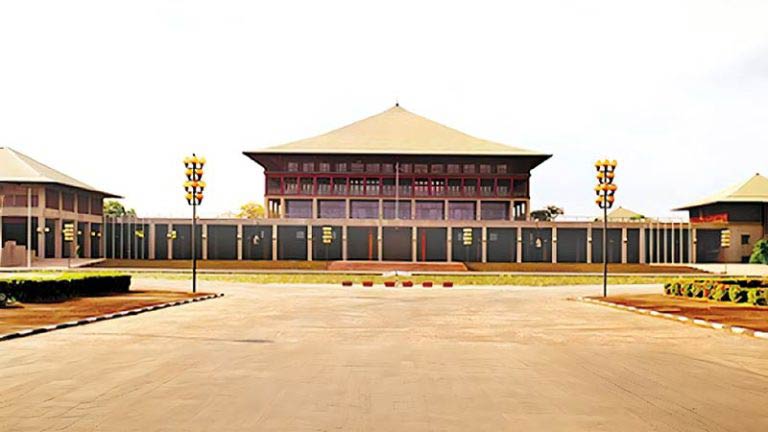
Lessons from my Career; synthesising management theory with practice – Part 2
by Sunil G Wijesinha
The Kamkaru Anduwa
I was in the last year of my training and stationed at the State Engineering Pre-cast Yard at Narahenpita. I was on a unique project experimenting with a concrete boat modelled on a popular FAO wooden fishing boat design. The election fever was at its peak. The workers had high hopes for a “Workers Government” (Kamkaru Anduwa). They were expecting a “dictatorship of the proletariat, ” hoping to end all their woes. They were promised the establishment of “Janatha Committees”, which would oversee the work of the officers and engineers. The spirits were high because the UNP government was no longer popular, and the United Front coalition led by the SLFP was tipped to win in a landslide.
I was very careful and avoided any semblance of affiliation or partiality to any ideology. One of my colleagues was a diehard Samasamajist who would forward compelling arguments as to why socialism and a state-run economy would be the best for the country.
The Aftermath
Election Day was, as usual, a holiday. By the early hours of the next morning, it was clear that the United Front of Mrs Bandaranaike, along with the Trotskyites (Samasamajists) and the Communist Party had won convincingly. When I arrived at my worksite that morning, what I witnessed was shocking. The Works Manager was pulled out of his office by the workers and kicked out of the site. It was celebrations and rejoicing and hooting and jeering. No one was working. No one was in charge. It was anarchy.
My boss, who was stationed at the Head Office, decided to make a site visit. He obviously chose the wrong day. As he arrived, he was greeted by the workshop union leader with lit crackers thrown at his body. There was nothing I could do against a massive hostile crowd. Being a burly man, he charged at them, and they all retreated but quickly returned with even more crackers. Finally, my boss decided to exit and beat a hasty retreat. The workers were jeering and hooting until he was out of sight. He had done no wrong, but unfortunately, he was a part of the “bourgeois” who the workers despised.
One of the foremen who often participated in our arguments during tea and lunch breaks remarked, “Mr Wijesinha, we have still not figured out which party you supported.” I was thankful for my neutrality. If not, I would have been one of those who were driven out with crackers.
A little while later that day, a gang of red-shirted supporters arrived, led by a well-known Samasamajist. He addressed the cheering workers about the wonders that would soon unfold and demanded that all stop work and come to a celebratory meeting near the Regal cinema.
We, too, left the site in the early afternoon because we had to attend a scheduled monthly lecture by a senior engineer at the Head Office. The subject was “Labour Management”. After arriving at the Head Office, we learned of the horrors that morning. The General Manager had been forced to kneel and worship a photograph of Mrs Bandaranaike. We noticed many professionals in groups discussing the future for them while many at lower levels were celebrating. Some of the engineers left the country a couple of months later. We got the news that there was no celebratory meeting near the Regal cinema, but it was a ruse to collect people to attack Lake House, which was believed to have supported the defeated UNP.
When our lecturer didn’t turn up for the lecture, I went to his office to remind him that we were waiting for him and that it was well past time. He responded that having observed the new environment unfolding, he could no longer lecture on “Labour Management.” We were happy to go home early that day.
The next morning, the situation at the site was very different. The workers were discussing and boasting about how many Lake House typewriters they smashed, how many bundles of newspapers they set on fire, and so on. It took a couple of days to restore some order at the site.
In a few months, the Euphoria was over. The workers who would telephone their political masters and address them as Comrade (Sahodaraya) began to drop this salutation and addressed them as Sir, much to the amusement of the officers. The workers realised very soon that a Kamkaru Anduwa was, in reality, not what they imagined and that it was not going to be. However, perhaps in frustration or anger, the Golf Links Housing site experienced a riot. The workers set upon the management for no apparent reason. It took months for peace to return to the pre-election level.
Learning Lessons
Labour management was never the same again, and this was a major turning point. Gone were the days when officers could shout at, could throw their shoes at, punish, and penalise workers at their whims and fancies. While the carnival was over for the workers, the management also learned many lessons.
I did some reflection in the following months, having learnt in theory how labour management had evolved historically. First, it was the KITA style (meaning “kick in the arse”) type management, then came the Frederick Taylor movement, where engineers designed the best way and only the “hands” of the workers were used. Thereafter came the Human Relations School of Management with a more humanistic approach to management. In other words, they proposed treating the worker not merely as a pair of hands but as a human being with a “heart” and feelings. Finally, the Japanese proposed that the in addition to hands and a heart the worker has a significant unused potential: the brain.
At one of the lectures by a senior engineer, we were guided on a more humanistic approach to management. His advice was never call a worker by his number (which we would often do), help him in difficult times, never financially penalise a worker (badata gahanna epa), give small inexpensive gifts to their children. I followed this good advice. It was bolstered and became more systematic after learning the Japanese concepts with similar philosophies in later years. I have been successful in managing labour and unions. The paradigm shift in thinking has been beneficial to the country, although I have often been accused of being a Marxist or a person who spoils the workers. Nevertheless, I will vouch for my approach to labour management using 1970 as a turning point where we all learnt lessons.
(Consultant on Productivity and Japanese Management Techniques
Retired Chairman/Director of several Listed and Unlisted companies.
Awardee of the APO Regional Award for promoting Productivity in the Asia and Pacific Region
Recipient of the “Order of the Rising Sun, Gold and Silver Rays” from the Government of Japan.
He can be contacted through email at: bizex.seminarsandconsulting@gmail.com)
Features
Covid-19 Lockdown in Manila
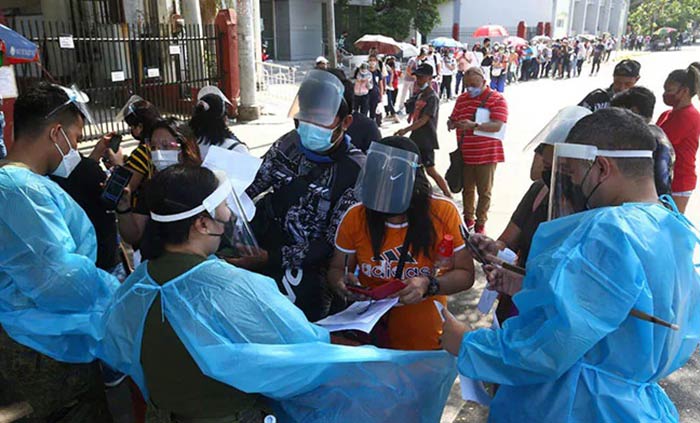
Media vita inmorte sumus (Amid life, we are in death)
by Jayantha Perera
In the second week of March 202I, I returned from Colombo and Shyamala from New Delhi to Manila. We just learned about the Philippines government’s decision to impose a total lockdown in Metro Manila starting over the weekend to combat the spread of the COVID-19 virus. The high risk of getting the virus dawned on me when I landed at Singapore airport early in the morning after having travelled overnight from Colombo. The airport was almost abandoned. A few passengers were waiting for their flights.
Nobody walked around without a mask. The flight from Singapore to Manila was a nightmare for me as the couple who sat next to me constantly coughed and cleared their throats under their masks. A harassed flight steward looked like a nurse at an intensive care hospital in personal protective equipment (PPE). She wore a mask and a face shield and moved fast from one row of seats to another, dropping brunch boxes on passengers’ tray tables. I declined my brunch box because I was scared to remove my mask to eat or drink.
During the weekend, Shyamala and I walked to the Greenway, a favourite public walking path. It was the most beautiful time in Manila. Trees were newly green, and plants were blooming with flowers. The sky was blue, and the sun shone brightly. The air was fresh. A marshal accosted us and asked us what we were doing away from home. Before we could answer, he told us we were supposed to be home. He allowed us to walk one length of the Greenway before we returned home.
We watched the TV to understand the magnitude of the pandemic and government-imposed dawn-to-night lockdown. It took us a while to understand the different stages of quarantine – ‘enhanced community quarantine’, ‘modified enhanced community quarantine’, ‘general community quarantine’, and ‘modified general community quarantine.’ Each lockdown type specifically focused on two groups of the population – the young, below 20, and the elderly, 60 or more.
As an elderly couple, Shyamala and I were supposed not to go out even to buy food and other essentials. The local Government of Bonifacio Global City (BGC) issued an official order outlining the rules and regulations for all BGC residents. At the same time, we received a memorandum from the Condominium Management Committee, which explained the local Government’s rules and regulations in detail. Only one household member, excluding the elderly, can go out at a time with the official pass issued by the local Government for a specific and essential need, such as buying food and medicine.
There were rumours that the Police had harassed several housemaids who walked in small groups with their dogs on roads and in parks. We heard some foreigners jogging on the streets were arrested for not carrying their curfew passes. Infrequently, an armoured vehicle with soldiers moved slowly on roads, announcing that residents should stay home and follow the curfew hours from 4 pm to 6 am. Manila looked like a sieged city.
Shyamala implemented a tertiary lockdown at home, a testament to her adaptability in the face of adversity. She instructed me to collect the Herald Tribune newspaper daily from the front office of the condominium, a task I undertook with caution, wearing rubber gloves and leaving the newspapers on our balcony table for three days before reading them. She also devised a meticulous system for handling groceries and other deliveries, demonstrating her resourcefulness in these challenging times. Edna, our helper, and I collected food shipments at the Delivery Collection Centre, ensuring each item was carefully placed on the balcony table for 24 hours. After that, Edna washed them with condis water.
Shyamala kept a small towel on the table at the apartment entrance for door and car keys, coins, receipts, and cell phones. She also had a large stock of masks and used them to replace overused masks of service providers, often with a rebuke. I occasionally forgot to wear my mask when I went out of the apartment to Shyamala’s consternation. She thought I was safe only if I were with her, as she carried one or two extra fresh masks and a strong antiseptic spray in her handbag.
My 70th birthday, falling on April 8, was a significant milestone, a reminder of the biblical age of three scores and ten years. Despite the heavy curfew, Shyamala was determined to celebrate. She phoned several cake shops and found one willing to deliver a jelly cake through a bicycle man, who navigated five army barriers to ensure the cake arrived intact. We could not invite friends except my father-in-law, who lived in the same building.
Shyamala and I had a lot of time because of the lockdown. Often, we asked each other whether it was a Wednesday or a Thursday? The word, weekend, disappeared from our vocabulary. In the early months of the pandemic, we spent most of our time watching the TV to learn about the virus, its transmission, and what precautions we should take. We learned we would not get large boils in our armpits or groin if we contracted the COVID-19 virus, as the Plague victims in medieval Europe did. It was a great relief to know that rats and fleas were not the vectors of the disease. The virus caused breathlessness, dry cough, and pneumonia. At least these symptoms were decent compared to that of the Plague. To my dismay, however, I learned that my vaccination against pneumonia was useless in fighting the COVID-19 virus.
Although I had more time, the time available for productive work shrank. I went for a morning walk at 6.30 when walking at a public park was allowed for elderly people. Breakfast took more than an hour. Shyamala, without fail, reminded me of the second coffee time at 10 am and was waiting for a cappuccino. After coffee, we chatted and read the ‘released’ three-day-old newspapers. By 11.00 am, I was at my desk. I started writing poetry to keep me busy for at least two hours daily.
I started paying for most services electronically. A mobile private banking service called G-Cash became popular as commercial banks ceased functioning. With G-Cash, we began to buy useless gadgets that were delivered home. Once, I enthusiastically ordered a high-speed mouthwash machine. I imagined it would be a miniature water cannon that would flush my mouth in a few seconds. However, the gadget had no mechanism to pressurise water, so it only dripped water into my mouth.
Every day, Edna proudly announced lunch was ready at noon. Shyamala collected me from my study and brought me to the dining table. After lunch, according to the home lockdown rules, it was time to rest. After a quick glance at the news on CNN and BBC, we moved to Netflix for an hour. Then was the nap time. Occasionally, I napped in the afternoon; for Shyamala, it was a daily ritual. She could not operate in the afternoon unless she got her forty winks. I usually slept 60 minutes, but only twice a week. On other days, I spent my time reading, writing, or watching National Geographic channels.
From teatime until dinner, we read or wrote letters and visited my father-in-law for a chat. Dinner was at 7 pm, and the time was sacrosanct – there couldn’t be any delay in sitting at the dinner table at 7 pm. After dinner, we watched a movie chosen by Shyamala. After the movie, we read our tablets and chatted with friends online. Shyamala retired at 10pm, and I listened to Sinhala songs on YouTube for an extra half an hour before retiring. Songs brought memories from the distant past in Sri Lanka and often made me nostalgic about Sri Lanka.
Staying at home, washing hands frequently, keeping social distance of two metres, and wearing a mask were simple rules. Doctors recommended no food or drink restrictions, for which I was grateful. The municipality allowed one hour of outdoor time for the elderly between 6 and 7 in the morning. We were supposed to stay at home or exercise closer to our residence at a designated zone for the elderly. The Greenway was out of bounds for us as we lived more than 500 metres away from it.
I woke up early to beat the 7 am deadline. If I passed the deadline, I covered my head with a large cap to conceal my white hair to avoid the attention of marshals on the road and at the park. I did not want to get accosted by a policeman because of my white hair. Shyamala was more adventurous than I was. Once, she took a cloth sack, wore her oversized sunglasses, and walked to a shop to buy cheese and good crusty bread.
Since then, she wanted me to go to the same shop to buy cheese, olives, pasta, and milk at the risk of arrest. She assured me that nothing would happen to me if I covered my white hair. Once, Shyamala opined I should dye my hair black and walk with the gait of a busy young man. She also thought revealing my legs might help hide my age, as I still had young legs! Another day, Shyamala picked up her father’s pass and took me for a long walk past a police station. I walked a few metres ahead of her, feeling safe and comfortable.
The Filipino people are known for their kindness and care for the elderly. Shyamala and I decided to live in the Philippines after retirement because of the Special Resident Retiree Visa, which gave us several privileges. We do not have to pay income tax. We get a 20% discount at coffee shops, restaurants, taxis, and cinemas. We do not stay in line to get services — getting a cab at the airport, withdrawing money at a commercial bank, or meeting an agent at a telecommunication centre.
After the lockdown, many privileges became inaccessible because the elderly were prohibited from leaving their homes. The Foreign Ministry declared Retiree Visa holders were not permanent residents of the Philippines. As a result, if we left the Philippines, we could return only when the Government allowed us to return. The underlying thought behind this policy was that retirees were a redundant segment of the local population highly vulnerable to COVID-19. The Government did not want to use its limited medical facilities and resources on the elderly. It wanted to keep such facilities and resources for income earners who fall into the age category of 21-60 years. Thus, the elderly had become a pariah group.
On TV we often saw crowded hospitals with lined-up ambulances waiting to bring COVID-19 patients to intensive care units. Several gowned and masked ‘frontline health workers’ battalions were waiting for calls from different parts of the city to transport critical patients.
Amid Corvid, the frontline health workers threatened to stage a ‘revolution’ against the Government, especially against the president, unless the Government provided relief from their non-stop services at hospitals. The president took the idea of revolution seriously and upgraded general community quarantine to “enhanced quarantine” so that health workers could break their heavy work schedule while the population lived under a total curfew. The president blamed the workers for “demeaning” the Government and giving citizens the wrong impression that the Government was not controlling the virus.
Staying at home all the time is not a common practice among the elderly. They may not go to offices or factories but are engaged in vibrant social activities, social services, and travelling. Before the pandemic hit Manila, Shyamala and I travelled abroad several times a year. Also, I travelled four to five times abroad on consultancies in a year. After 2020, the elderly became the last group eligible for overseas air travel.
We worried about our children who lived in Hong Kong, Colombo and Florida. We worried about my father-in-law, who was 93. He had done well during the first 12 months of the pandemic. Then he complained about his lingering lower back pain and shooting pains in his legs. He thought cancer had returned to his lungs and wanted to get tests done. But to visit a hospital had become an elaborate ritual because of the pandemic. Meeting a doctor and getting a few tests done took a whole day. Fortunately, he continued to spend lots of time on the stock market and took financial risks as he had done during the past 50 years. We were glad that he was not depressed.
In mid-2021, we heard that infection and death rates of COVID-19 were increasing at an alarming rate in the Philippines. For the first time, a sense of hopelessness descended upon us. With desperation came fear and uncertainty. We felt we were losing everything we possessed, including life. Slowly, a strict lockdown regime emerged as a “new normal”. It was more stringent than what we knew as “normal.” My life and perhaps Shyamala’s would never be the same again. It was a challenging but also promising thought.
Non-negotiable death
At birth
did not know my past.
Now, on the cusp of death
I do not know where I am,
where I will go.
My existence ring-fenced
I can see its contours
I cannot shrink or expand them.
An invisible hand overseeing it?
Reactivity prolongs my being
And has brought me this far
promising an eternity or nirvana
But Covid can overwrite my fate.
Oh, death, the great equaliser
You have shaken our belief
the young live long,
and the old die soon, to its core.
Now, life is short for everyone!
Appointing beneficiaries
to enjoy my wealth after my death
does not hold true any more,
as the pandemic could consume them
before it visits me.
A sneeze, a cough or a wheeze –
Is it the doorbell that calls
me – my body and mind – to face
the start of disintegration?
Epilogue
During the past several months, I have published a collection of moments from my life (the Collection) in the Sunday Island. A ‘moment of life’ is a memory capsule which records an event of one’s life – an enchantment, a challenge, a loss or an achievement. Some moments are powerful and resurface as coherent stories. Once they are juxtaposed, the narrative of life emerges. The narrative is not a constant; it changes with different permutations of moments. Thus, the narrative of life is fluid and ever-changing. The Collection presents a few moments from my life spanning over seven decades.
I am what I can remember. My memory, filled with life difficulties, hopes, worries, and achievements, is the essence of my being. Such memories are not just recollections but also fantasies and imaginations.
I have randomly selected and elaborated on a few moments from my memory that have, I thought, created my ‘self’. I could have included more life moments, but I refrained from doing so believing that the reader could construct my ‘self’ in her mind from the narrative emerging from the moments I have presented in the Collection.
A recurring theme in this Collection is grace. In many moments, guidance and assistance came in different forms and from other persons, quite unexpectedly. They helped me tackle challenges and risks and took me through difficult phases of life. I have noticed that such grace brought relief and comfort when challenges and risks seemed insurmountable. Many people came to rescue me, lead me, and protect me. At such times, I often failed to see grace in their actions. But in retrospect, I see their true motives, sacrifices, and benevolence. I appreciate and celebrate their kindness and love by narrating such moments.
Through my experiences, I have learned that planning has its limitations. In my youth, I planned to become a lawyer. But my father’s untimely death at the age of 47 completely changed my life and life chances. Some memories I have highlighted in the Collection initially looked like failures, harassment, and mistakes. But they eventually bettered my life. I also learned the value of patience and keeping my mind open to new experiences. This openness has led to better results and happiness in my life.
-
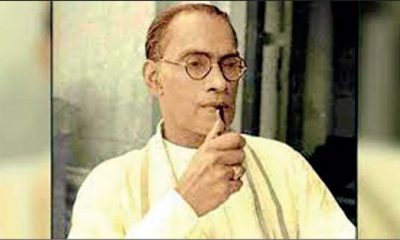
 Opinion6 days ago
Opinion6 days agoCost of ‘Sinhala Only’
-
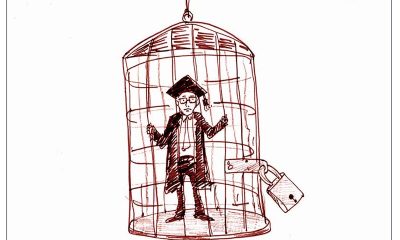
 Features6 days ago
Features6 days agoA conversation that cannot be delayed
-
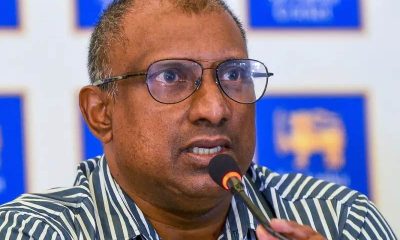
 Sports6 days ago
Sports6 days agoAussies brought the best out of me – Aravinda
-

 Editorial6 days ago
Editorial6 days agoOnly delivery can save govts.
-

 Editorial5 days ago
Editorial5 days agoFish or cut bait
-
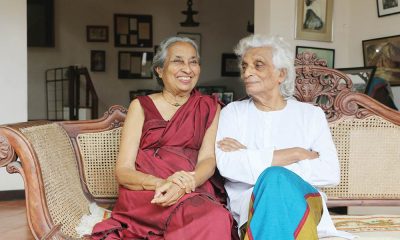
 Features2 days ago
Features2 days agoA singular modern Lankan mentor – Part I
-
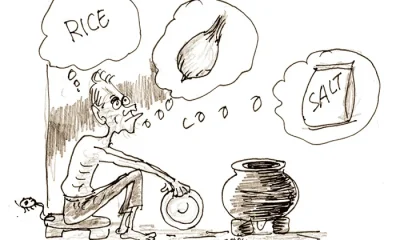
 Opinion5 days ago
Opinion5 days ago‘Not even congee now!’
-
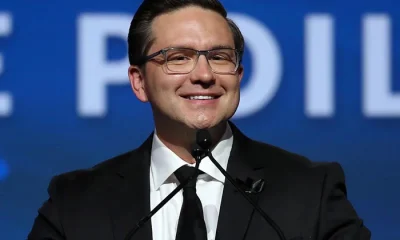
 News4 days ago
News4 days agoWar crimes: Canada’s Conservative Party leader vows to ‘lead the world’ in seeking prosecutions against Sri Lankans












